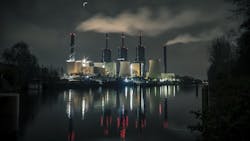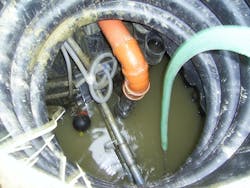Wastewater Treatment in Municipal & Industrial Applications
The Amendments to the Federal Water Pollution Control Act in 1972 set the objective to restore and maintain the chemical, physical, and biological integrity of U.S. waters. The Clean Water Act (CWA) ensured that the communities have access to clean water by regulating the number of contaminants in the nation’s waterways and its treatment through primary and secondary channels.
Wastewater has the natural ability to treat itself with time. But with increasing population and industrial activity, increased levels of treatment before discharging municipal and industrial wastewater is needed.
The United Nations Sustainable Development Goals (UN SDGs) has set targets for improved water quality, integrated water resource management, improved water use efficiency, and restored water-related ecosystems.
Why is Municipal & Industrial Wastewater Management Important?
During the first half of the 20th century, municipal and industrial wastewater was combined and sent for treatment via a single drain. This process lead to health hazards for human and marine life and required segregation of municipal and industrial wastewater.
Pollutants in Municipal and Industrial Wastewater
- Biochemical Oxygen Demanding (BOD) substances – Industrial and domestic waste release oxygen-demanding pollutants into the water. These pollutants originate both from plants and animals from food processing, paper manufacturing, and leather tanning. Bacteria convert these pollutants into other compounds, but the process of breaking down uses up the dissolved oxygen used by fish.
- Pathogens – Infectious micro-organisms or pathogens are the source of water-borne diseases. They may percolate into the groundwater via industrial activity such as tanning and food processing, or via animal feces from pets and livestock.
- Eutrophication/ Cultural Enrichment – Minerals such as carbon, phosphorus, and nitrogen are naturally found in water and are needed for adequate nutrition. But if these are released in excess by secondary water treatment plants, they can result in excess algae, blockage of sunlight, and choking of marine life.
- Inorganic waste – Human and industrial activity releases large amounts of inorganic waste into the drainage system which includes detergents, household cleaning liquids, heavy metals, pharmaceuticals, and pesticides. Some of them are highly poisonous even in small concentrations while others leave a bad odor or taste in the water.
- Thermal waste – Wastewater discharged from cooling systems at elevated temperatures can deplete the oxygen present in the water.
Industries such as chemical, electric power, food processing, iron and steel, mining, nuclear, automotive, and paper and pulp are some of the major contributors to wastewater pollutants. For example, on average 70 million cars are produced globally every year, contributing over 34 trillion liters of wastewater. These pollutants, if released into streams and groundwater untreated, can be a hazard for human and marine life.
If treated efficiently, municipal and industrial wastewater can be a valuable source of energy and nutrients. For example, sludge from municipal wastewater can be used to extract energy and bio-solids for agricultural use, whereas phosphorous from eutrophication can be used in manufacturing fertilizers.
Common Industrial & Municipal Wastewater Challenges & Solutions
Treating wastewater is not as simple a process as it used to be half a century ago. Increasing population, CWA guidelines, changing EPA regulations with a focus on health and safety, throw newer challenges to segregate and process the wastewater.
There cannot be a single universal solution to industrial and municipal wastewater management. Tailoring wastewater treatment according to the water source, pollutant types, geographical location, budget, and availability of technology is the primary challenge. Other challenges include –
- High Biochemical Oxygen Demand (BOD) & Chemical Oxygen Demand (COD) – Aerating the waste can encourage biological oxidation and produce solid waste that can be easily removed via filtration and clarification.
- High Total Suspended of Dissolved Solids – CWA regulations put a limitation on Total Suspended Solids (TSS) and Total Dissolved Solids (TDS) in wastewater. TSS is often filtered with sand carbon filtration method. TDS require chemical treatment, demineralization, or evaporation.
- High Nitrate and Phosphate Levels – Nitrates and phosphates enter wastewater streams through human and animal waste. It can be treated with IX, RO, clarification, or biological treatment.
- Oil and Grease – In addition to environmental damage, oil and grease can clog the waterways and drainage systems. They are often treated with Dissolved Air Floatation (DAF), Ultra-Filtration (UF), and carbon filtration methods.
- Large Discharge Volume – Some industrial and municipal facilities generate large volumes of wastewater which may demand the implementation of zero liquid discharge systems. This allows chemical volume readjustments, recovers most of the liquid waste for reuse, treats valuable byproducts, and produces dry/ solid cake for disposal.
Additionally, many wastewater collection and treatment facilities that are old and worn require improvement and maintenance to extend their life. This requires continuous monetary and technology investment.
Wastewater Treatment Technologies
Off-site treatment facilities usually collect wastewater from municipal and industrial drainage systems and process it via various methods to separate different types of waste. Wastewater is also stored inside the industrial units in closed-top frac tanks before transporting it to the processing facility. Wastewater treatment can be broadly divided into three categories –
Primary Wastewater Treatment
At this stage, wastewater is passed through filtering devices that remove coarse solids which comprise up to 50% of suspended pollutants. The filtered material is called primary sludge which is then sent for bio-solid treatment.
Secondary Wastewater Treatment
At this stage, biological organisms are used to naturally separate pollutants from wastewater. The solid waste thus produced settles at the bottom of the tank and can be easily removed. The waste produced is called secondary waste or biological sludge. The bio-solids thus produced are either used as natural fertilizers in farming and landfill for energy production. Bio-solids can also be incinerated to break into simpler substances that are released into soil, air or water.
Tertiary Wastewater Treatment
At this stage, chemical treatment methods are used to remove the pollutants from wastewater before releasing it into natural water bodies.
Some of the specialized technologies used to treat wastewater that fall under either of the three broad categories mentioned above are –
- Reverse Osmosis (RO) – This method involves passing water through a semi-permeable membrane in a direction opposite to that of natural osmosis. This process is used in industries such as petrochemical, pharmaceutical, and food and beverages.
- Ultra-Filtration (UF) – It is similar to reverse osmosis where water is forced through a semi-permeable membrane.
- Nano-Filtration (NF) – It is a comparatively newer technology with results that lie between RO and UF. NF can remove nano particles that are as low as 0.002 and 0.005 µm in diameter such as pesticide compound and organic macromolecules. NF technology retains valuable minerals that are otherwise removed by RO process.
- Ceramic Filtration – It involves ultra-filtration or micro-filtration that can treat wastewater even at higher temperatures. The filters have inorganic membranes made from aluminum oxide, silicon carbide, titanium dioxide, and zirconium oxide that help in separating different biomass.
- UV Light Filtration – It is a non-intrusive way of treating wastewater that can be used in applications such as aquaculture, building services, food & beverage, marine & shipping, pharmaceuticals, petroleum, etc. It helps eliminate a wide range of contaminants such as urea, phenols, and polyaromatic hydrocarbons from industrial wastewater.
- Dissolved Air Floatation (DAF) – If you want to separate suspended solids, a DAF plant could be effective. DAF plants are used in abattoirs and fish processing units with high levels of biological solids. This system is used to reduce Chemical Oxygen on Demand present in fat, grease, and organic waste.
- Gravitation sludge dewatering – This is one of the simplest ways to separate sludge from wastewater produced by municipal and industrial sources. This involves storing sludge in a dewatering container and let it drain the water using gravity. At times, vacuum could be used to expedite the dewatering process. These are commonly used in construction sites, environmental remediation efforts, and shipyards.
Conclusion
As cities and industries continue to grow, monetary and intellectual investments are needed in efficient and sustainable ways of treating water discharged from municipal and industrial sources. Wastewater should be considered a valuable resource from which energy can be extracted, before releasing the nutrient-rich water back into the streams for marine life.
The key is to adopt a circular wastewater management model that adds to the economy, recovers resources, and reuses them via a self-sustainable process.


